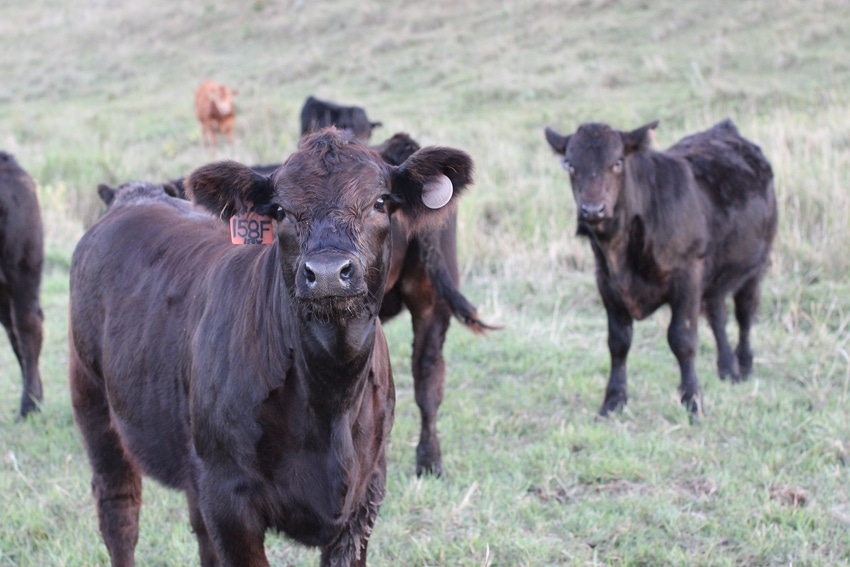Frank Mitloehner clears the air on cattle and greenhouse gas emissions. Here are four tidbits worth sharing with naysayers.
October 30, 2018

In my opinion, one of the best champions for the beef industry is Frank Mitloehner, a University of California, Davis professor of animal science and air quality Extension specialist.
Mitloehner is world-renowned for his study of greenhouse gas (GHG) emissions. The great news for beef producers is that his research clearly points to grave errors made by other researchers who have falsely claimed that cattle are more damaging to the environment than transportation, electricity and other industries.
He challenges the notion that we should all convert to plant-based diets by detailing how these researchers got it wrong. Plus, he makes a great case for how beef cattle are not only beneficial to the environment, but they help solve the problem of nutritionally providing for the world’s growing population.
READ: Research proves beef production nets positive use of natural resources
In a recent article published on The Conversation, Mitloehner shares some great information about how cows are “not killing the climate.”
While the entire article is worth the read, I pulled four talking points into a blog post for easy reference when talking to folks about cattle and climate change.
FACT: Meat is not the highest contributor of GHG.
Two previous studies conducted by Worldwatch Institute and the United Nations Food and Agriculture Organization (FAO) erroneously claimed that livestock production was more harmful to the environment than all modes of transportation. These claims have been debunked in a multitude of ways. However, Mitloehner says it’s hard to “unring the bell” due to the widespread media coverage following both of these reports.
Mitloehner details a more accurate picture of livestock production and GHG emissions. He writes, “According to the U.S. Environmental Protection Agency, the largest sources of U.S. GHG emissions in 2016 were electricity production (28% of total emissions), transportation (28%) and industry (22%).
“All of agriculture accounted for a total of 9%. All of animal agriculture contributes less than half of this amount, representing 3.9% of total U.S. greenhouse gas emissions. That’s very different from claiming livestock represents as much or more than transportation.”
READ: Eat beef to benefit the planet
FACT: Going vegan won’t save the planet
Move over Meatless Mondays and plant-based idealists. That’s not the way to reduce emissions and preserve natural resources.
Mitloehner explains, “Many people continue to think avoiding meat as infrequently as once a week will make a significant difference to the climate. But according to one recent study, even if Americans eliminated all animal protein from their diets, they would reduce U.S. greenhouse gas emissions by only 2.6%. According to our research at the University of California, Davis, if the practice of Meatless Monday were to be adopted by all Americans, we’d see a reduction of only 0.5%.”
FACT: U.S. cattle ranchers efficiently produce more beef and emit fewer GHG emissions than ever before.
Mitloehner writes, “The technological, genetic and management changes that have taken place in U.S. agriculture over the past 70 years have made livestock production more efficient and less greenhouse gas-intensive. According to the FAO’s statistical database, total direct greenhouse gas emissions from U.S. livestock have declined 11.3% since 1961, while production of livestock meat has more than doubled.”
FACT: Without meat, it would be hard for a growing planet to meet its nutritional needs.
Cattle grazing is a critical component of utilizing marginal land that would otherwise go unused. Using solar power, cattle convert grass to high-quality protein, beef!
Mitloehner says, “The energy in plants that livestock consume is most often contained in cellulose, which is indigestible for humans and many other mammals. But cows, sheep and other ruminant animals can break cellulose down and release the solar energy contained in this vast resource. According to the FAO, as much as 70% of all agricultural land globally is range land that can only be utilized as grazing land for ruminant livestock.
READ: Survey indicates conservation a high priority for cattle ranchers
“The world population is currently projected to reach 9.8 billion people by 2050. Feeding this many people will raise immense challenges.
“Meat is more nutrient-dense per serving than vegetarian options, and ruminant animals largely thrive on feed that is not suitable for humans. Raising livestock also offers much-needed income for small-scale farmers in developing nations. Worldwide, livestock provides a livelihood for 1 billion people.”
Read the entire article here and share this blog post far and wide to help spread the news that cattle play an important role in our ecosystem, as well as providing excellent nutrition to feed the world!
The opinions of Amanda Radke are not necessarily those of beefmagazine.com or Farm Progress.
About the Author(s)
You May Also Like





